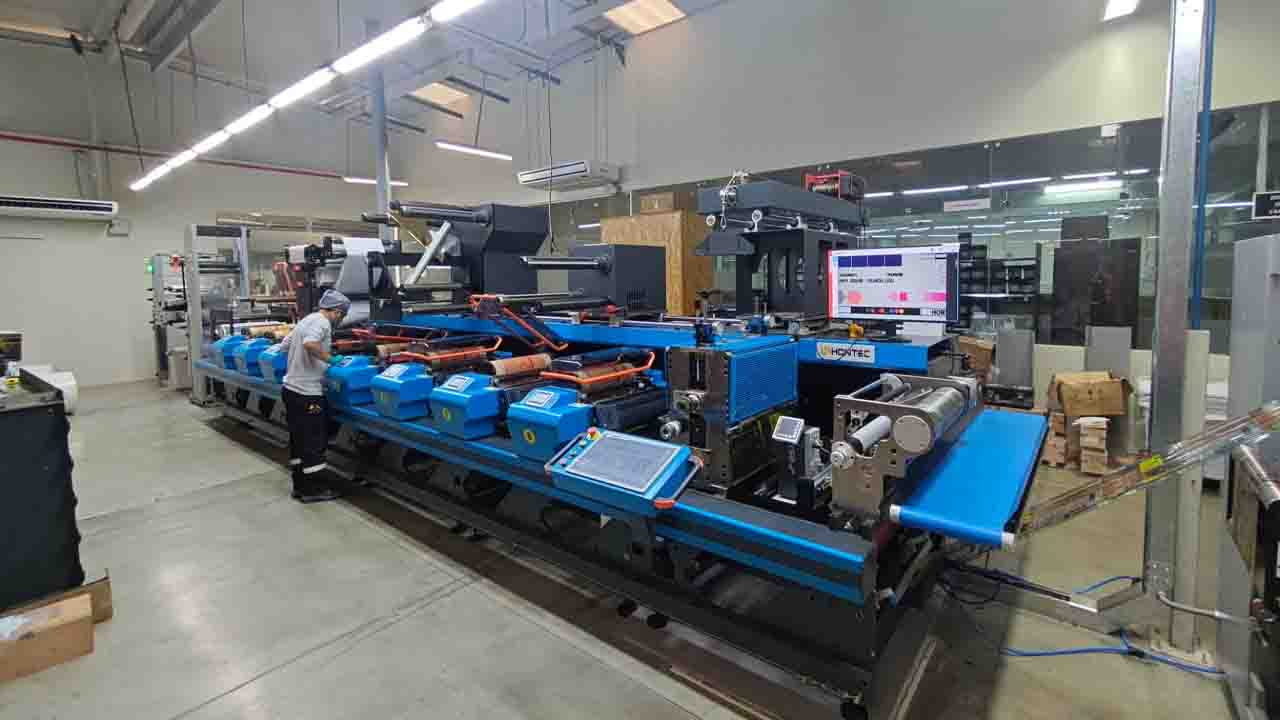Logotex rides export wave
Label converter Logotex is benefiting from a surge in Peru’s export market and movement into prime label production with Mark Andy presses. James Quirk reports
Logotex, based in the Peruvian capital of Lima, was founded in 1980 as a producer of simple pricing labels. One of the first self-adhesive label printers in the country, it expanded into barcode labels and soon began exporting to nearby countries such as Ecuador, Colombia, Bolivia and Paraguay.
These early pricing labels were produced on presses from Brazilian company Ibirama (now Etirama), from which Logotex still runs five machines of three and four colors.
‘The presses had a tremendous influence on the Latin American market at that time,’ says Logotex’s general manager Dante Way, who runs the label converter with his wife Rosa Bueno, who serves as finance manager. Both trained as industrial engineers. ‘They were economical but more than sufficient to serve the needs of the market.’
The company began to expand into production of labels for supermarket brands. After a visit to Labelexpo Americas, Way and Bueno invested in a 6-color Comco Cadet flexo press in 1998, allowing movement into film production.
Investment for a changing climate
Logotex has benefited from the recent wave of Peruvian economic growth. A surge in the export market has seen an increased need for locally printed labels for products bound for neighboring Latin American countries and, thanks to a recent trade agreement, the US. In recent years, Peru has had the highest GDP growth of any country in the region, aided by the government’s economic stabilization and liberalization programs which have lowered trade barriers and opened the country to foreign investment.
Dante Way cites these changing economic conditions as an important element of the company’s growth which, in the last five years, has seen it invest in two further Mark Andy LP3000 presses: a 6-color and, more recently, a fully UV 8-color machine. ‘There has been greater political and social stability in the last decade,’ he says. ‘Companies have begun to produce much greater volumes for the export market, and there has been an increasing demand from end users for self-adhesive labels.’
Sixty percent of Logotex’s production is now dedicated to full color prime labels, mainly for export markets for the agro-chemical and industrial sectors. The company also produces paper label for the large textile and fruit export markets.
As ever, challenges remain. With a limited local supply chain and Peru’s great distance from the US, Logotex imports materials in bulk and, according to Rosa Bueno, will often rely on its own resourcefulness due to a lack of local technical support: several of the company’s presses boast in-house modifications. ‘It can be difficult to compete with Chile, for example,’ she says, ‘where materials can be purchased more cheaply. We have to import everything.’
Further investment in machinery, say the owners, is on the horizon. The facility in which Logotex has operated for the last 12 years has room for expansion; space which the company says will be used sooner rather than later.
‘As a family owned company, we have no business partners,’ says Bueno. ‘This is a great advantage in terms of being able to react and take decisions quickly. For the purchase of the Comco and two Mark Andy machines, the decision to invest was taken at Labelexpo Americas in Chicago. We don’t have to discuss it with the board, so we can move quickly.’
Pictured: The 8-color Mark Andy LP3000
This article was published in L&L issue 4, 2010
Stay up to date
Subscribe to the free Label News newsletter and receive the latest content every week. We'll never share your email address.


